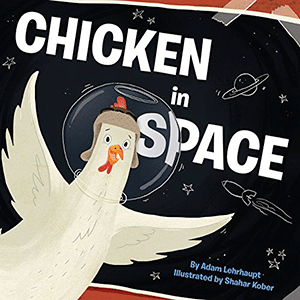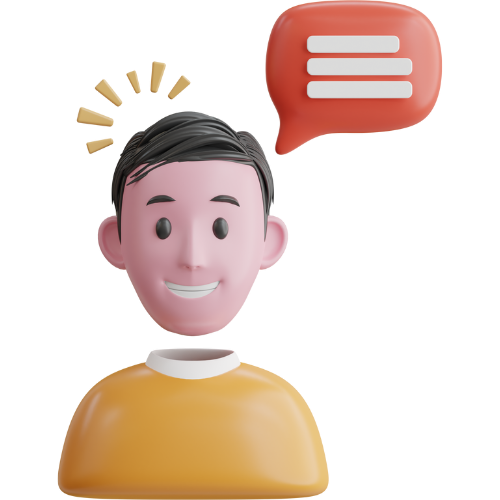Let me guess. You grabbed a picture book to wind things down after recess, and ten minutes later, half your class was trying to launch a paperclip into orbit using only rubber bands and righteous enthusiasm. There were index cards flying, someone was chanting “LAUNCH IT AGAIN!”—and now you’re out of tape.
Been there. Blame the chicken. Trust me.
When I wrote Chicken in Space, I thought I was writing about a dreamer. Turns out, I accidentally created an entry-level blueprint for aspiring aerospace engineers—with way too many toilet paper rolls. Which brings us to today’s big idea:
STEM picture books aren’t just good for story time. They’re blueprints for bold thinking, creativity, and hands-on classroom fun. Whether you’re teaching engineering design, coding logic, or creative problem-solving, these read-alouds can ignite curiosity in ways a worksheet never could.
🧠 Why STEM Picture Books Belong in Your Lesson Plans
STEM picture books help you build bridges—between literacy and hands-on science, between creative play and engineering concepts, and between emotional growth and logical thinking.
Here’s why they work:
- They spark curiosity with characters kids already love.
- They simplify complex STEM concepts with engaging illustrations and storytelling.
- They normalize failure and iteration, showing kids it’s okay to mess up, laugh, and try again.
- They naturally lead to real-world design challenges, engineering prompts, and team-based problem-solving.
In short? They’re STEM on training wheels—with glitter and googly eyes.
📚 5 STEM Picture Books That Launch Big Learning (and Bigger Projects)
These titles aren’t just cute—they’re catalysts. Each one kicks off a high-engagement activity that meets Common Core and NGSS standards while giving your students a chance to build, reflect, and soar. I’ve included an amazon affiliate link for each, but I always recommend shopping at your local independent bookstore if possible. (Psssst. There’s also a link to download the STEM Start Pack with all these resources below.)
1. Chicken in Space by Adam Lehrhaupt
STEM focus: Design thinking, engineering prototypes
Activity: Build a flying machine using classroom recyclables—paper towel tubes, string, index cards, anything goes.
Set a goal: distance, airtime, or style points for dramatic crash landings.
Bonus tip: Egg carton helmets. They’re hilarious. You’re welcome.
2. The Floating Field by Scott Riley
STEM focus: Engineering for difficult environments
Activity: Challenge students to design something functional that works in a “hard” setting: a floating pencil pouch, a stormproof book tote, a mobile supply station.
Use constraints like wind, water, or weight to guide their design choices.
3. Invent-a-Pet by Vicky Fang
STEM focus: Cause-and-effect, coding logic
Activity: Students design their own “pet-creation machine” by selecting inputs (like “feathers + banana peel”) and defining the outputs (“flying monkey that throws smoothies”).
Use flowcharts or visual code blocks for extra tech tie-ins.
4. The Most Magnificent Thing by Ashley Spires
STEM focus: Trial-and-error, growth mindset
Activity: Give each student five mystery items from a supply bin. Their task? Build something helpful. Anything!
Then, reflect: What failed? What worked? What would they try next?
5. How to Build a Hug by Amy Guglielmo & Jacqueline Tourville
STEM + SEL focus: Designing for empathy and accessibility
Activity: Students create a device that helps someone—comforts, supports, or cheers them up. The only rule? Must include cardboard and a rubber band.
Great for introducing neurodiversity and invention with heart.
✏️ Tips for Using STEM Picture Books in Your Classroom
You don’t need a STEM lab to make these lessons unforgettable. You just need the right mix of preparation, play, and reflection.
1. Set up open-ended stations, not step-by-step directions.
Give your students materials, space, and the freedom to explore. You’ll be amazed by what they come up with.
2. Expect—and embrace—chaos.
It’s okay if things get loud. If kids are troubleshooting, reworking, and narrating their wild banana launcher ideas? That’s learning in action.
3. Use classroom reflection prompts.
After the building buzz dies down, ask:
- What did you try that didn’t work? What did?
- What surprised you?
- How did you solve problems?
These moments build self-awareness and better engineers.
4. Align with standards.
Many of these activities hit Next Gen Science Standards (NGSS) for engineering design, as well as Common Core ELA objectives around comprehension, sequence, and summarizing. It’s not just fun—it’s curriculum-aligned fun.
📥 Get the Free Printable: STEM Picture Book Resource Pack
Want all these activities wrapped up in a tidy, easy-to-print download with worksheets and bonus challenges?
👉 [Click here to download the free STEM Picture Book Resource Pack]
Perfect for sub plans, project days, or “we-need-a-break-but-still-learning” Fridays.
💬 Share Your STEM Story
Tried one of these ideas in your classroom? Built something bonkers? Saw your students absolutely light up? I want to hear about it! Comment below, or even better, tag me on Instagram @lehrhaupt and use the hashtag #PictureThisPodcast.
I’ll be clapping in the comments—and asking what kind of tape held your masterpiece together.
❓ FAQ: STEM Picture Books in the Classroom
How do I choose the right STEM picture books for my students?
Start by matching the theme of the book to your learning goals. If you’re introducing design thinking, use Chicken in Space or The Most Magnificent Thing. Teaching resilience and teamwork? How to Build a Hug is a perfect fit. Look for books where characters tackle problems with imagination, make mistakes, and persist—those are STEM gold.
Can I use these books and activities across grade levels?
Absolutely. The beauty of STEM picture books is their adaptability. For K–2, keep the activities simple—less cutting, more drawing and verbal reflection. For grades 3–5, raise the challenge with constraints, written reflections, and mini-presentations. Same book, new depth. And my STEM starter pack even has leveling instructions for each activity.
What if I don’t have a lot of materials?
No problem! Most of these challenges work with recyclables, basic classroom supplies, or even imagination-based brainstorming. A “design your dream machine” prompt can be entirely paper-based. Tape is optional. Ideas are not.
How do I manage the energy, or chaos, during build time?
Set expectations clearly up front. Use timers, role assignments (e.g. Builder, Materials Manager, Presenter), and reflection sheets to keep the energy constructive. Praise process, not just finished products. And remember: mess equals magic in STEM.
What are some ways I can connect STEM picture books to common core standards?
My STEM starter pack pairs each activity with relevant NGSS or Common Core standards, but here’s some easy ideas you can use for other STEM picture book activities. For example:
• NGSS K-2-ETS1-1: Ask questions, make observations, and gather information to define a problem.
• CCSS.ELA-LITERACY.RL.3.3: Describe characters and explain how their actions contribute to the sequence of events.
Adding these standards to your lesson plan makes it easy to justify these lessons in team meetings or parent newsletters.
How can I repeat these activities throughout the year?
I love this idea! Try creating a “STEM Story Friday.” Repeating the suggested format with new books encourages deeper skills over time—and gives students something to look forward to that still counts as serious learning.
📚 Final Thoughts: Why STEM Picture Books Matter
STEM picture books give students more than just knowledge—they build confidence, creativity, and critical thinking. When your students see characters problem-solve, fail forward, and imagine the impossible, they’re more willing to try, test, and tinker themselves.
So go ahead. Read that story. Build that banana launcher. And watch your students turn into engineers before the bell rings.
🟢 Want more ideas like this every week?
Join my newsletter for creative classroom strategies, book recs, and ready-to-print resources that make learning a little more magical (and manageable).




